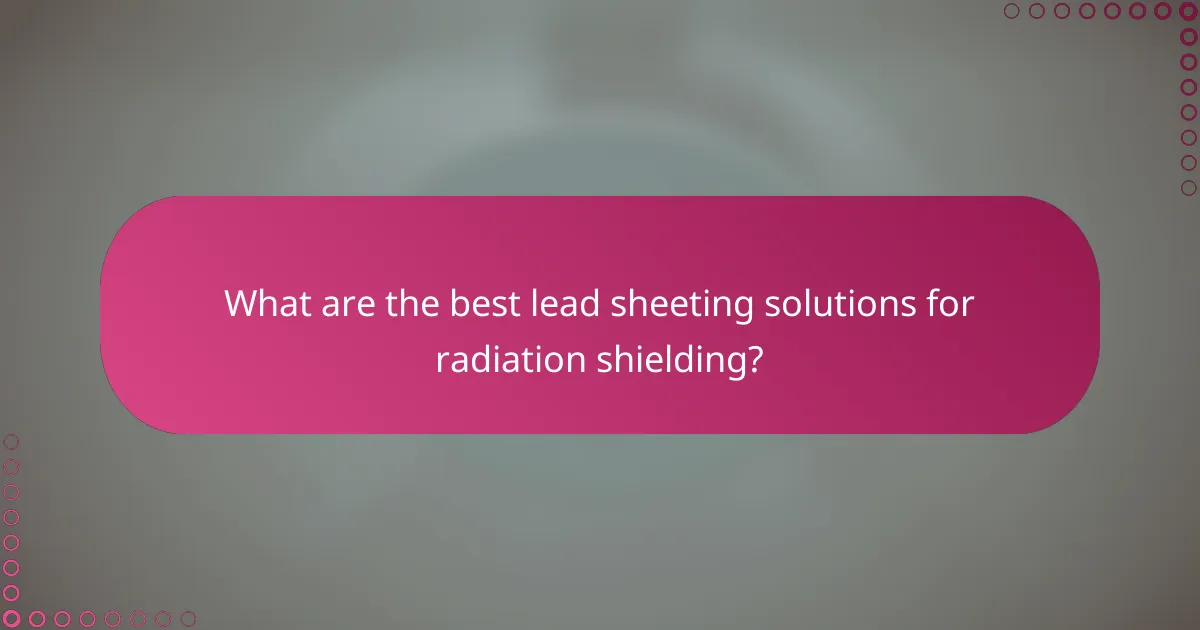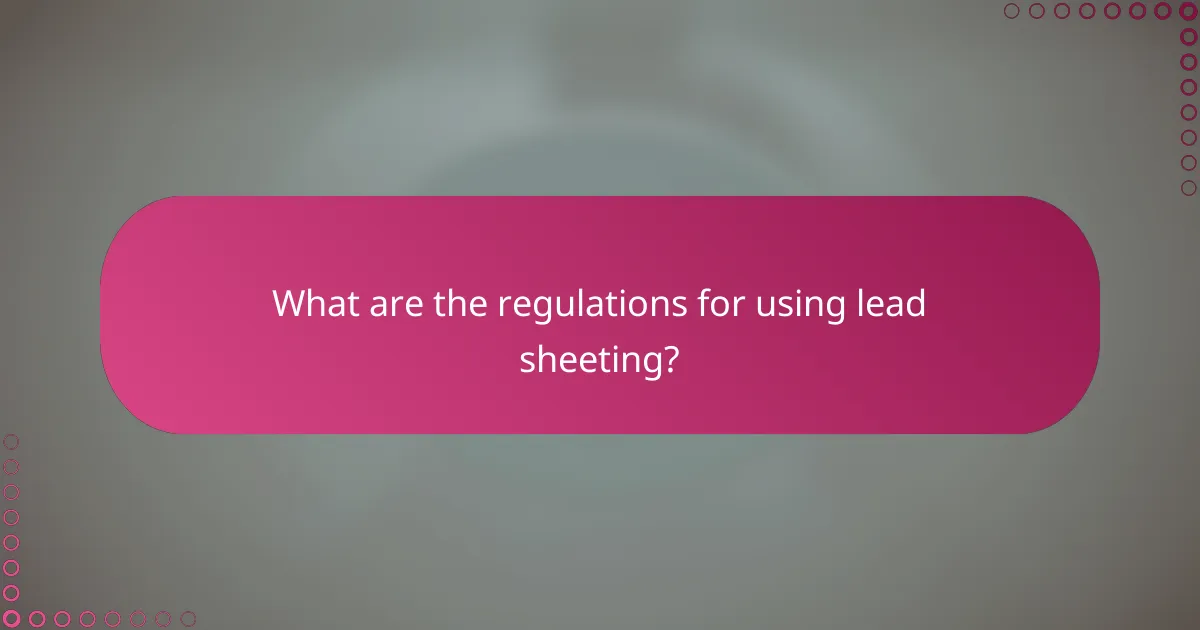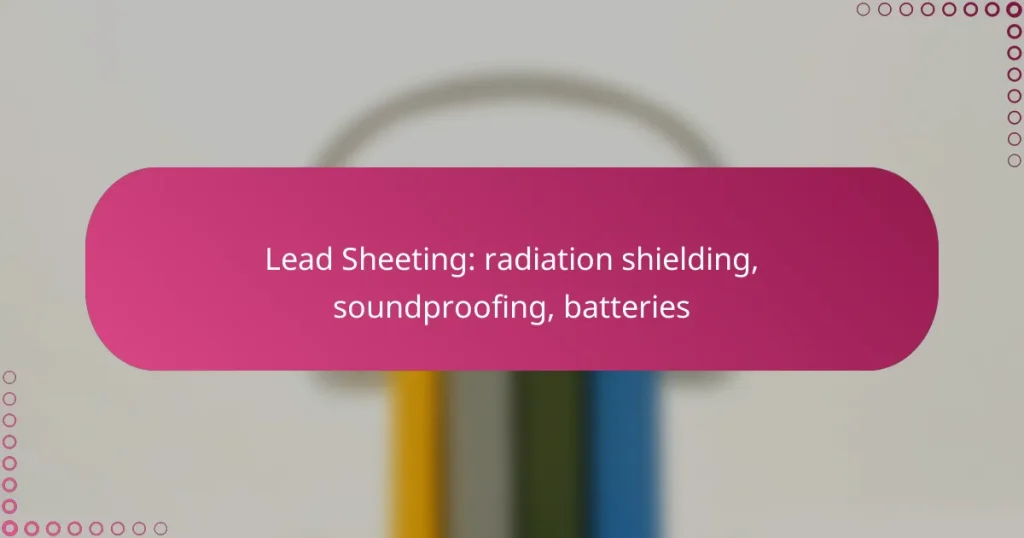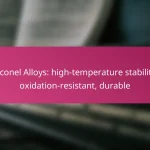Lead sheeting is a versatile material widely used for radiation shielding, soundproofing, and in battery production. Its high density makes it effective in blocking harmful radiation and reducing noise transmission, while its electrical conductivity is essential for the performance of lead-acid batteries. Tailored solutions are available for various applications, ensuring compliance with safety standards and enhancing efficiency in multiple environments.

What are the best lead sheeting solutions for radiation shielding?
The best lead sheeting solutions for radiation shielding include lead sheets specifically designed for medical facilities, lead-lined drywall for construction, and custom lead sheeting for industrial applications. Each option offers unique benefits tailored to different environments and regulatory requirements.
Lead sheets for medical facilities
Lead sheets are essential in medical facilities to protect patients and staff from harmful radiation emitted during diagnostic and therapeutic procedures. Typically, these sheets are available in various thicknesses, commonly ranging from 1/16 inch to 1/4 inch, depending on the level of radiation exposure expected.
When selecting lead sheets for medical use, consider factors such as the type of equipment in use and local regulations regarding radiation safety. Proper installation and sealing are crucial to ensure maximum effectiveness and compliance with health standards.
Lead-lined drywall for construction
Lead-lined drywall is an effective solution for constructing walls in areas requiring radiation protection, such as X-ray rooms and nuclear medicine departments. This drywall combines standard gypsum board with a layer of lead, providing a seamless barrier against radiation.
When using lead-lined drywall, ensure that it meets local building codes and health regulations. Installation should be performed by professionals familiar with lead safety practices to avoid contamination and ensure structural integrity.
Custom lead sheeting for industrial use
Custom lead sheeting is often required in industrial settings where radiation exposure is a concern, such as in nuclear power plants or research facilities. These sheets can be tailored to specific dimensions and thicknesses based on the application and regulatory standards.
When opting for custom lead sheeting, consider the environment in which it will be used, including factors like temperature and humidity, which can affect performance. Collaborating with suppliers who specialize in radiation shielding can help ensure that the sheeting meets all necessary safety and compliance requirements.

How does lead sheeting provide soundproofing?
Lead sheeting effectively provides soundproofing by blocking sound waves due to its high density and mass. This makes it an excellent material for reducing noise transmission in various environments, particularly where sound isolation is critical.
Lead sheeting for sound isolation in studios
In recording studios, lead sheeting is commonly used to create sound isolation barriers that prevent external noise from interfering with audio quality. The material’s density helps absorb and block sound waves, making it ideal for both walls and ceilings. When installing lead sheeting, ensure proper sealing around edges to maximize soundproofing effectiveness.
Consider using lead sheeting in combination with other soundproofing materials, such as acoustic foam or mineral wool, to enhance overall sound isolation. This layered approach can significantly reduce sound transmission across a broader frequency range.
Lead barriers for noise reduction in commercial buildings
In commercial buildings, lead barriers are utilized to minimize noise from mechanical systems or external sources, contributing to a more comfortable environment. These barriers can be installed in walls, ceilings, or as standalone partitions, depending on the specific noise control needs of the space.
When implementing lead barriers, it’s crucial to assess the noise levels and frequencies present in the environment. This assessment will guide the thickness and placement of the lead sheeting to achieve optimal noise reduction. Regular maintenance checks are also recommended to ensure the integrity of the barriers over time.

What are the applications of lead sheeting in batteries?
Lead sheeting is primarily used in batteries for its excellent electrical conductivity and ability to provide structural support. It plays a crucial role in lead-acid batteries, enhancing safety and efficiency in various applications.
Lead-acid battery construction
Lead sheeting is integral to the construction of lead-acid batteries, where it forms the plates that store electrical energy. These plates are typically made from a lead alloy, which is coated with lead oxide to improve performance. The use of lead sheeting helps in maintaining the battery’s structural integrity while facilitating efficient chemical reactions during charging and discharging.
In lead-acid batteries, the thickness of the lead sheeting can vary, usually ranging from 1 to 3 millimeters, depending on the specific application and required capacity. Thicker sheets can enhance durability but may add weight, which is a consideration in portable applications.
Lead sheeting for battery storage safety
Lead sheeting is essential for ensuring safety in battery storage, particularly in preventing leaks and containing hazardous materials. It acts as a barrier against the corrosive sulfuric acid found in lead-acid batteries, reducing the risk of spills that could lead to environmental contamination.
When storing lead-acid batteries, it is crucial to use lead sheeting to line storage areas, especially in industrial settings. This practice not only protects the surrounding environment but also complies with safety regulations that may require secondary containment measures. Regular inspections of the lead sheeting can help identify wear or damage, ensuring ongoing safety and compliance.

What are the key attributes of lead sheeting?
Lead sheeting is a versatile material known for its effective radiation shielding, soundproofing capabilities, and use in battery production. Its unique properties make it suitable for various applications, particularly in medical, industrial, and construction settings.
Thickness and weight specifications
Lead sheeting is available in various thicknesses, typically ranging from 0.5 mm to several millimeters, depending on the intended use. Thicker sheets provide better radiation protection, while thinner options may suffice for soundproofing. Weight is another consideration; lead is dense, so even small sheets can be quite heavy, impacting installation and handling.
For example, a 1 mm thick lead sheet can weigh around 11 kg per square meter, making it crucial to account for structural support when planning installations. Always check local building codes to ensure compliance with weight limits and safety regulations.
Durability and lifespan factors
Lead sheeting is highly durable and resistant to corrosion, which contributes to its long lifespan in various environments. When properly maintained, lead sheeting can last for decades, making it a cost-effective choice for long-term applications. However, exposure to certain chemicals or extreme conditions can affect its integrity.
Regular inspections are recommended to identify any signs of wear or damage, particularly in environments with high humidity or corrosive substances. Additionally, proper installation techniques can enhance durability, ensuring that seams and edges are securely sealed to prevent degradation over time.

How to choose the right lead sheeting for your project?
Choosing the right lead sheeting depends on its intended use, such as radiation shielding, soundproofing, or battery applications. Consider factors like thickness, density, and specific project requirements to ensure optimal performance.
Considerations for radiation shielding needs
When selecting lead sheeting for radiation shielding, the primary factors are the type and intensity of radiation you need to block. For example, X-rays and gamma rays require thicker sheets, often in the range of 1 to 5 mm, depending on the exposure level.
It’s essential to comply with local regulations regarding radiation safety, which may dictate minimum shielding requirements. Consulting with a radiation safety officer can help determine the appropriate thickness and type of lead sheeting needed for your specific application.
Soundproofing requirements and environment
For soundproofing, lead sheeting’s density makes it effective at blocking sound transmission. The thickness required can vary; typically, sheets between 1 to 3 mm are sufficient for most applications, but thicker options may be necessary for high-noise environments.
Consider the surrounding environment when installing lead sheeting for soundproofing. Ensure proper sealing and installation techniques to avoid gaps, which can significantly reduce effectiveness. Additionally, combining lead sheeting with other soundproofing materials, like acoustic panels, can enhance overall sound attenuation.

What are the regulations for using lead sheeting?
Regulations for using lead sheeting focus on health, safety, and environmental impact. These rules vary by country but generally require proper handling, protective measures, and disposal methods to mitigate risks associated with lead exposure.
Health and safety guidelines
Health and safety guidelines for lead sheeting emphasize minimizing exposure to lead dust and fumes. Workers should use personal protective equipment (PPE) such as gloves, masks, and goggles when handling lead materials. Adequate ventilation is essential in workspaces to reduce inhalation risks.
Employers must provide training on lead safety and establish protocols for monitoring lead levels in the workplace. Regular health check-ups for workers who handle lead sheeting are also recommended to detect any potential health issues early.
Environmental regulations for lead disposal
Environmental regulations for lead disposal are critical to prevent contamination. Many countries classify lead as a hazardous waste, requiring specific disposal methods. Lead sheeting must be disposed of at licensed hazardous waste facilities to comply with local laws.
Before disposal, it is important to check local regulations regarding lead recycling options, as some facilities may accept lead for recycling. Always ensure that any disposal method adheres to national and regional guidelines to avoid legal penalties and environmental harm.


